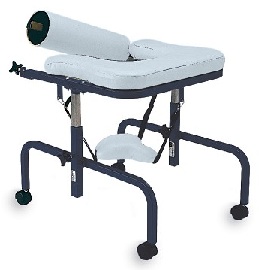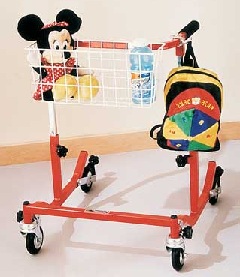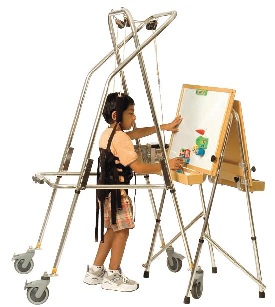Blog Roll: (Contributors)
» Hulet Smith, OT
» Megan Smith, PT
» Mike Price, OT
Topics:
Adaptive Devices
Adult Tricycles
Air Purifier
Allergy
Alternative Communication Devices
Alzheimer's Dementia Products
Aquatic Products
Arthritis Relief Products
Autism
Back Relief
Ball Pit/Pool
Bariatric
Bath Benches
Bathtub Lift
Bed Rails
Bedsores / Decubitus
Bidet
Body Solid Exercise Products
Breast Feeding Products
Bushel Trucks
Cancer
Catheters
CEU
Changing Bench
Child Car Seats
Child Care Products
Christmas Gifts
Clinic/Medical Equipment
Clinical Furniture
Cold and Flu
Communication Devices
Compression Garments
Computer Products
CPAP
Crutches
Daily Assistance Products
Daylight Lamps
Dental Care
Diabetes
Doctor's Office
Dysphagia
Electrodes
Electrolarynx
Emergency Preparedness
Ergonomic Equipment
Exam Tables
Exercise Products
Eyecare
Family Tricycles
First Aid Kits
Floor Scales
Fluidotherapy
Foot Drop
Foul Weather Gear
Furniture
Gait Trainers
General Articles
General Posts
Glassless Mirrors
Hand Sanitizer
Head Protection Helmets
Hearing Impaired
Heart Health
Heating Pad
Hip Fractures
Home Assistance Products
Home/Office Assistance
Hospital Beds
Hoyer Lifts
Hyperbaric chamber
Hyperthermia/Hypothermia
Ice/Hydration Carts
Impotence Products
Incontinence Products
Infection Control Gowns
Inspirational Stories
Lift Chairs
Light Therapy
Low Vision Products
Massage Tables & Chairs
Massage Units
Maternity
Medical Facility Products
Medical Scales
Multi-Sensory Environment
Natural Healing
Nebulizers
Non-Hospital Bedding
Nutritional Supplements
Office Furniture
One-Handed Products
Operating Room Devices
Ostomy Products
Oxygen Compressors
Oxygen Concentrator
Oxygen/Nebulizer Masks
Pain Relief
Paraffin Unit
Patient Lift
Patient Lifts
Patient Restraints
Patient Transfer Systems
Pediatric Bath Chairs
Pediatric Furniture
Pediatric Learning
Pediatric Recreation
Personal Listening Devices
Personal Warming Products
Physical Therapy
Pill Organizers
Pillows
Playground Equipment
Pool Lifts
Press Releases
Procedure Chairs
Pulse Oximeter
Reading Assistance
Reference Materials
Rehab Equipment
Rehabmart News
Rehabmart Newsletter
Respiratory Health
Rollators
Saunas
Scooters
Seniors
Shower Chairs
Shower Commode Chairs
Shower Gurney
Showers Chairs
Side Access Bathtubs
Skin Tear
Special Needs Dinnerware
Special Needs Seating
Special Report Articles
Splints
Sport Injuries
Standers
Staying Home
Stethoscopes
Stimulus Reward Toys
Stress Relief
Stroke
Strollers
Summertime Products and Summertime Fun
Talking Products
Therapy Balls
TheraTogs
Thermometers
Traction Devices & Tables
Treatment Tables
Ultrasound
Vibroacoustic Therapy
Vision Products
Walk-In Bathtub
Walking Aids
Walking Boot
Weighted Wearables
Wheelchair Accessories
Wheelchair Cushions
Wheelchair Lifts
Wheelchair Ramps
Wheelchair Transfer Systems
Wheelchairs
Women's Health
Work Hardening Products
Wound Care
Wheeled Walkers for Children
Wheeled Walkers for Children
Walking is a major developmental milestone for young children all around the world, and nothing is cuter than those first wobbly attempts, and those inevitable spills. But no one knows better than parents that it takes plenty of time, practice, and balance to coordinate all of those developing large motor skills to master the advanced skill that is walking. Newbie walkers are just now getting the hang of balancing on their own two feet standing still. Standing actually helps toddlers build the muscular strength that is necessary for them to take that first or next step. But for toddlers who are developmentally delayed or have problems with balance core stability or coordination, learning to walk can be a seemingly insurmountable task to little tots and their frustrated parents alike.
 How can a shaky stander develop the leg muscles needed to walk? The Kaye Wheeled Walker Wagon is designed to provide support and stability for toddlers just learning to walk. As an added benefit, toddlers will not even realize that it is a walking aid because it looks like a toy! The Kaye Walker Wagon facilitates toddlers' exploration and control of their environment while building crucial muscle groups whether the child is standing or pushing and walking. The adjustable handle provides for an adequate stride length and assists in good posture, making it the favorite "toy" for children to get up and go through age four.
How can a shaky stander develop the leg muscles needed to walk? The Kaye Wheeled Walker Wagon is designed to provide support and stability for toddlers just learning to walk. As an added benefit, toddlers will not even realize that it is a walking aid because it looks like a toy! The Kaye Walker Wagon facilitates toddlers' exploration and control of their environment while building crucial muscle groups whether the child is standing or pushing and walking. The adjustable handle provides for an adequate stride length and assists in good posture, making it the favorite "toy" for children to get up and go through age four. Children benefit greatly from having a proper balancing aid as they begin to develop those fundamental muscular and coordination skills needed for standing and walking. The Deluxe Child Wheeled Walker can be used for standing, walking, or sitting. It has a padded body ring to protect fragile bones and skin during the learning adjustment. As the child takes each step, a view of the Wheeled Walker moving forward provides an awareness of self and self-accomplishments. Self-awareness is enriched with learning the cause and effect of early walking motion combined with the forward rolling motion of the Wheeled Walker, making it the perfect choice for children two to eight years.
Children benefit greatly from having a proper balancing aid as they begin to develop those fundamental muscular and coordination skills needed for standing and walking. The Deluxe Child Wheeled Walker can be used for standing, walking, or sitting. It has a padded body ring to protect fragile bones and skin during the learning adjustment. As the child takes each step, a view of the Wheeled Walker moving forward provides an awareness of self and self-accomplishments. Self-awareness is enriched with learning the cause and effect of early walking motion combined with the forward rolling motion of the Wheeled Walker, making it the perfect choice for children two to eight years.  For thousands of children in the United States, walking is something that cannot be accomplished in the first few years of life. Physical or developmental delays, muscle weakness, or severe illness are the major contributors of these late blooming walkers. Providing the correct, not just an adequate walking aid, is critical to give the child the supportive control they need as they work those legs and refine their balance while boosting some much needed confidence. The Pediatric Anterior Safety Roller accommodates children from early childhood through young adulthood as the child grows, making this walking aid "step" out from the crowd of imitations and inferior aids. Pressure to the handlebar activates the braking mechanism and this extra safety feature makes it perfect for children with limited hand function/control or limited cognizance. The Safety Roller consistently serves up safe ambulation with a sense of freedom on the side.
For thousands of children in the United States, walking is something that cannot be accomplished in the first few years of life. Physical or developmental delays, muscle weakness, or severe illness are the major contributors of these late blooming walkers. Providing the correct, not just an adequate walking aid, is critical to give the child the supportive control they need as they work those legs and refine their balance while boosting some much needed confidence. The Pediatric Anterior Safety Roller accommodates children from early childhood through young adulthood as the child grows, making this walking aid "step" out from the crowd of imitations and inferior aids. Pressure to the handlebar activates the braking mechanism and this extra safety feature makes it perfect for children with limited hand function/control or limited cognizance. The Safety Roller consistently serves up safe ambulation with a sense of freedom on the side.Some children and adolescents do not have the strength to bear their own weight in order to be able to build the muscle groups needed for walking. In the past, these individuals have been bedridden or wheelchair ridden due to the inability to support their own body weight.
 Thankfully, modern technology is changing their environment with The Kaye Suspension Walkers, which supports the user fully or partially weight-bearing posture for standing and walking. The amount of body weight that the individual supports is easily adjusted with a manual winch, taking on more of their own weight as muscles develop. The individual's body can move from sitting to standing positions with varying amounts of support.
Thankfully, modern technology is changing their environment with The Kaye Suspension Walkers, which supports the user fully or partially weight-bearing posture for standing and walking. The amount of body weight that the individual supports is easily adjusted with a manual winch, taking on more of their own weight as muscles develop. The individual's body can move from sitting to standing positions with varying amounts of support.The Kaye Suspension Walker is available in two sizes, providing maximum support to toddlers and adults too. The width of Walker is adjustable to span many treadmills while being able to retract to fit through all but the narrowest of doorways. This feature, along with the light frame, makes it possible for people to use the Kaye Suspension Walker both for treadmill training and over ground practice and makes it easier to build coordination, balance, and stability while working on those important muscle groups.
Alyssa Aldana,
Medical Consumer Writer
and
Hulet Smith, OT
Rehabmart Team Leader & CEO
